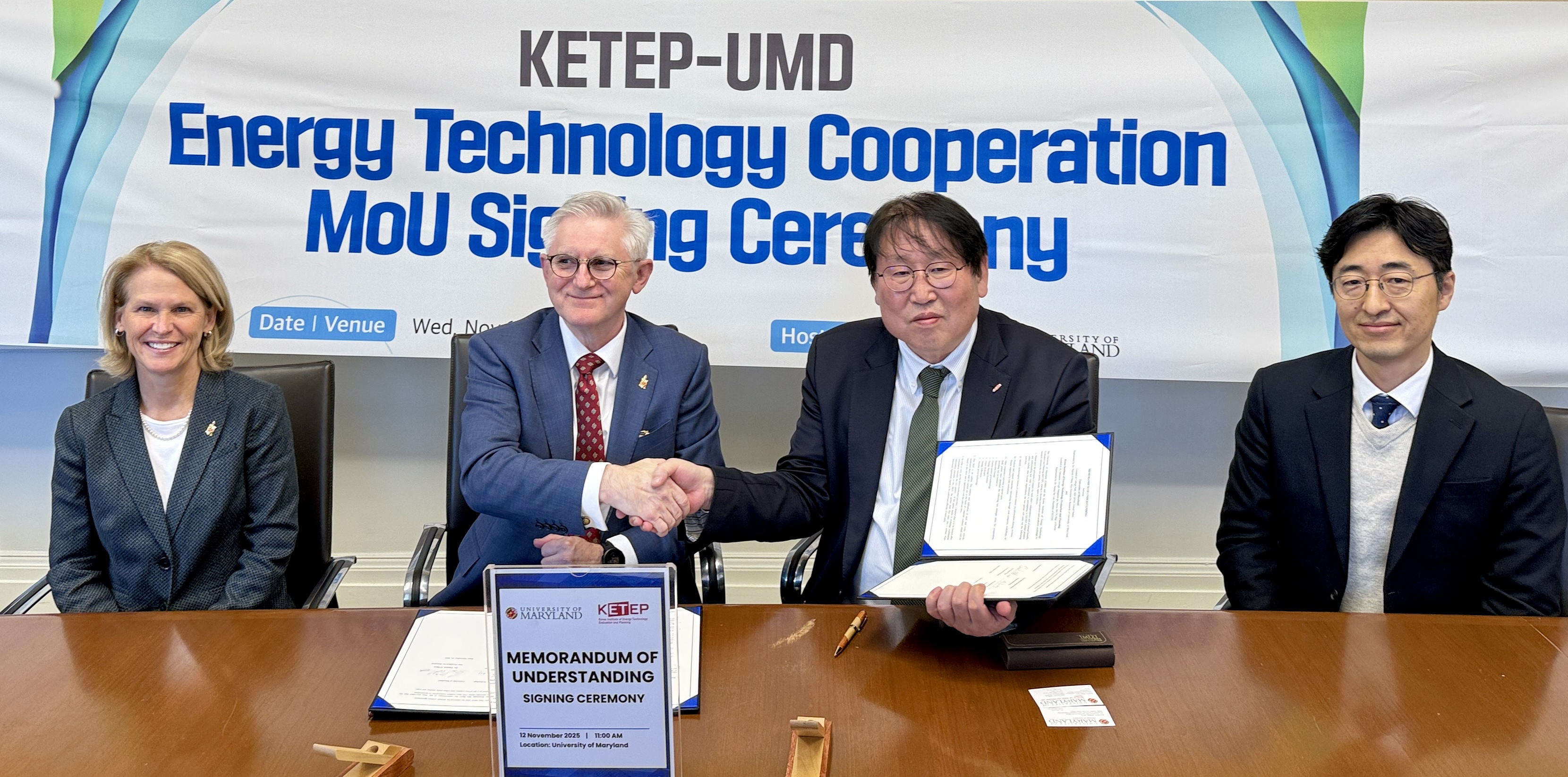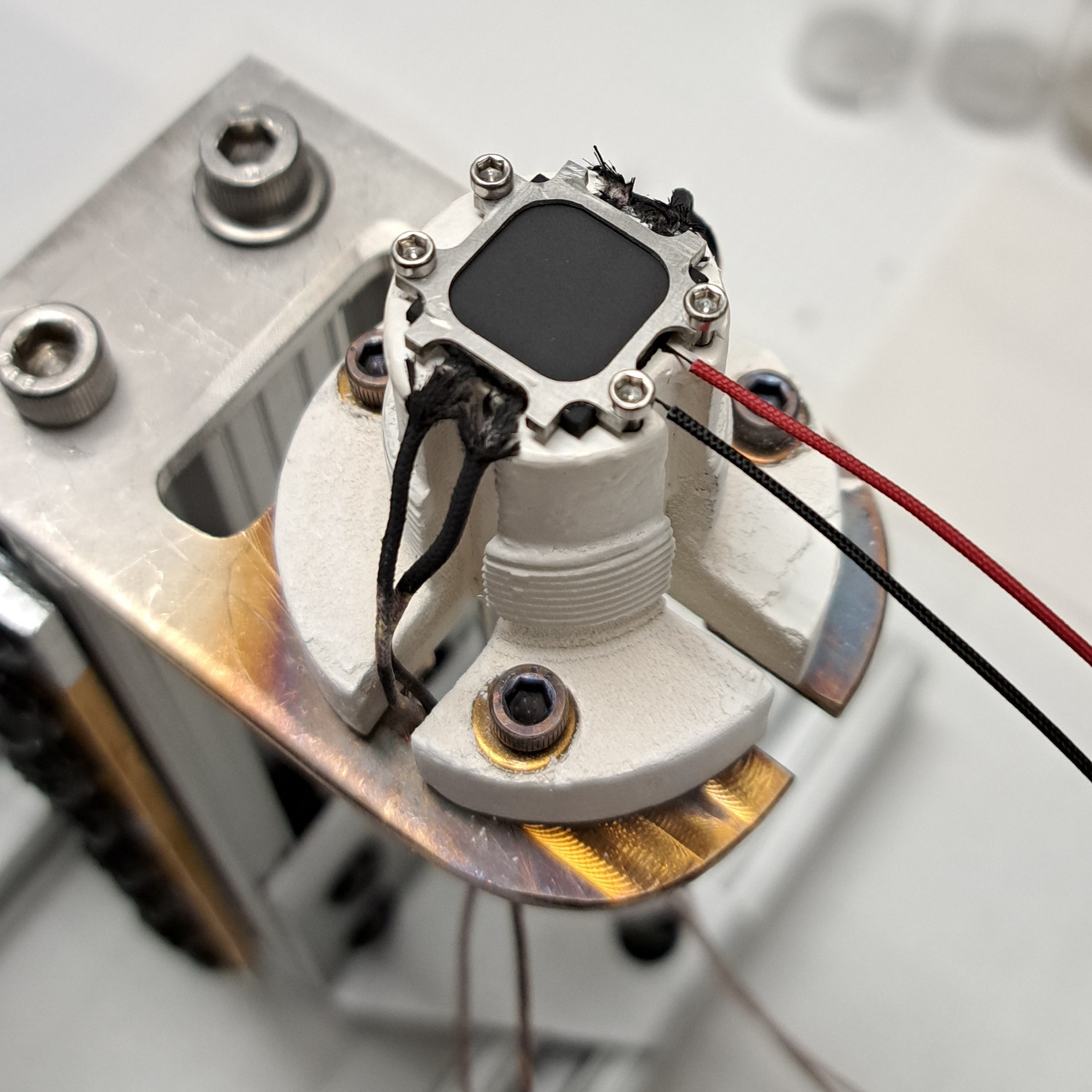News Story
MSE Capstone 2013 (Video)

MSE Professor, Undergraduate Program Director and Capstone instructor Ray Phaneuf (center, with clipboard) talks to a group of seniors about their final project.
This year, MSE expanded its Capstone format to include four groups that delivered oral and poster presentations, and a lunch at which winners of department and college-level awards were recognized and new members of Alpha Sigma Mu, the international professional honor society for materials science and engineering, received their certificates and tassels.
The 2013 projects were:
Team Dendrimer: "Biomedical Implant Corrosion Passivation Using PAMAM Dendrimer Films"
Elizabeth Ashley, Mari Hagemeyer, Ben Jones, Rachel Stein and Kerry Toole
Biocompatible titanium alloys are often used to create medical implants such as replacement joints. Once in place, however, the alloys may undergo electrochemical corrosion, resulting in the release of titanium ions into the surrounding tissue, prolonging recovery time and causing inflammation. Team Dendrimer used a material with a complex, densely-branching molecular structure (a dendrimer known as G5 PAMAM) in their design of a thin-film coating for titanium alloy implants. The material was designed to have a passivating effect—that is, to reduce the chemical reactivity of the surface of the implant. In both computer simulations and testing of prototypes, they found that the PAMAM dendrimers both reduced the corrosion rate of titanium oxide and trapped most of the titanium ions that were released before they could diffuse into their surrounding environment.
Team Dramastic: "Designing an η-Cu6Sn5 Alloy Anode for Sodium Ion Batteries"
Rajinder Bajwa, Caleb Barrett, David Lockman, Nichols Weadock, Joseph White, and Matthew Zager
Sodium ion batteries (NIBs) have the potential to overtake the use of lithium ion (Li-ion) batteries in high capacity solar and wind energy storage grids due to their low cost and the abundance of sodium. Unfortunately, they suffer from short functional lifespans due to the rapid breakdown of their tin (Sn) anodes, which are gradually pulverized as they expand and contract when sodium (Na) atoms move through the system. Team Dramastic explored the use of a copper-tin (Cu-Sn) alloy called η-Cu6Sn5 for use as a NIB anode because of its greater potential to handle changes in its volume. While the use of Cu-Sn alloy anodes has been explored in Li-ion batteries, Team Dramastic believes it is among the first to apply the concept to NIBs. The group created and tested their anode with encouraging preliminary results.
Team H2: "Photocatalytic Water Splitting Using ZnWO4 and NiOx Catalysts"
Norena Beaty, Nick Faenza, Tanner Hamann, Owen McGovern, Satiago Miret, and Mark Reese
Photocatalytic materials–those that react to ultraviolet (UV) light to power the reactions necessary to split water to produce clean hydrogen fuel–are known for their high cost, inefficiency, and/or poor scalability–all factors which prevent them from being used at an industrial level. Team H2 designed a photocatalytic system using a novel combination of ZnWO4 and NiOx catalysts, which are both inexpensive and can be easily fabricated. After completing simulations, the team's optimized prototype was created using an efficient, nontoxic process. The team also conducted a series of simulations designed calculate their material's performance under various conditions.
Team SMP: "Light-Activated Shape Memory Polymers (SMPs): Muscle Actuation for Prosthetics"
Emily Dumm, Nesredin Kedir, Dave Newton, Zara Simpson, Hanna Walston, and Erik Weinhold
Team SMP set out to test cost-effective, lightweight and responsive materials for their potential use as "robotic muscles" that would generate motion in artificial limbs. Their design took the form of a shape-memory polymer lining for the interior of a prosthetic arm that would induce the bending and release of its elbow when activated by specified wavelengths of either visible or UV light. Team SMP tested both a liquid crystal elastomer and a grafted polymer network, using finite element analysis and modeled structural and fatigue responses to optimize the size and composition of the lining before building their prototype. The team also performed stress and yield strength analysis of both materials under predetermined conditions.
For more information about the Clark School's Department of Materials Science and Engineering Capstone Design course (ENMA 490), and to see more from both this year's and previous years' projects—including technical reports, presentations and video—please visit the MSE Capstone Design homepage »
Published May 28, 2013













